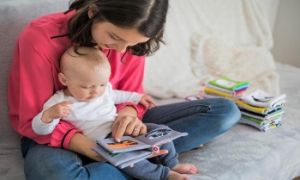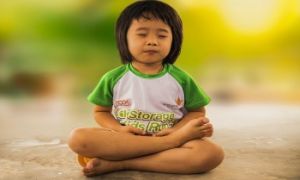Assessments in early childhood education are a continuous process that helps educators understand children's progress, strengths, and areas for growth. The following article provides information on Main Types Of Assessment, Approaches To Assessment, Importance Of Assessments In Early Childhood Education, Strategies For Effective Assessment, Creating a Positive Assessment Environment, Cultural Responsiveness and more.
Main Types Of Assessment
Gathering and evaluating relevant data regarding each child's needs, strengths, and growth is the process of assessment. Three primary categories of evaluation exist:
- Assessment for learning, also referred to as formative assessment, occurs when teachers and educators use a range of strategies to gather detailed and meaningful information about children’s interests, abilities, and learning dispositions. They then use this information to inform decisions about curriculum and pedagogy and to assist in responding to each child’s different learning pathways.
- Assessment of learning, also referred to as summative assessment, sums up what children have learned at a point in time, such as mid-year or when they are transitioning to another room at the service. Teachers and educators are also able to identify how each child’s learning progresses over time.
- Assessment as learning occurs when the assessment process is itself a learning experience that involves input from children. Children are supported to actively contribute to the assessment process. This supports a curriculum to reflect ways of knowing, being and doing
Approaches To Assessment
1. Observations
-
Method: Regularly observe children during play and daily activities to gather insights into their skills and behaviors.
-
Example: Noting how a child interacts with peers, engages in tasks, and explores their environment.
2. Anecdotal Records
-
Method: Write brief, objective notes on significant moments or behaviors observed in children.
-
Example: Documenting a child's response when they successfully solve a puzzle or share toys with a friend.
3. Checklists and Rating Scales
-
Method: Use checklists and rating scales to systematically track developmental milestones and specific skills.
-
Example: A checklist for social skills might include items like "makes eye contact" and "initiates play with peers."
4. Portfolios
-
Method: Compile collections of children’s work, photographs, and teacher observations to showcase their progress over time.
-
Example: Including artwork, writing samples, and photos of activities that demonstrate growth in various areas.
5. Learning Stories
-
Method: Create narrative accounts of significant learning experiences or episodes that highlight children’s learning processes.
-
Example: A story about a child building a tower, including the steps they took, challenges they faced, and how they resolved them.
Importance Of Assessments In Early Childhood Education
1. Understanding Each Child’s Unique Needs
-
Personalized Learning: Assessments help educators gain insights into each child's individual strengths, weaknesses, and learning styles, enabling them to tailor instruction and activities to meet the specific needs of each child.
-
Example: If a child shows a strong interest in storytelling but struggles with fine motor skills, educators can incorporate more activities that integrate storytelling with fine motor practice, such as drawing or making storyboards.
2. Early Identification of Developmental Delays
-
Timely Interventions: Through regular assessments, educators can identify any developmental delays or challenges early on. This early detection allows for timely interventions and support services to address these issues before they become more significant barriers to learning and development.
-
Example: If a child is not meeting language milestones, educators can work with speech therapists and the child’s family to provide targeted support.
3. Monitoring Progress Over Time
-
Tracking Growth: Continuous assessment allows educators to monitor a child’s progress over time, celebrating achievements and making necessary adjustments to teaching strategies and the learning environment.
-
Example: Documenting a child's progress in a portfolio helps track how their skills in areas like social interaction, problem-solving, and creativity have evolved over the school year.
4. Informing Instruction
-
Data-Driven Teaching: Assessment data provides valuable information that educators can use to plan and adjust their instructional methods and curriculum to better support children's learning and development.
-
Example: If assessments reveal that a group of children excels in hands-on learning activities, the educator might incorporate more sensory and manipulative materials into the curriculum.
5. Enhancing Parent-Teacher Collaboration
-
Shared Insights: Assessments foster active collaboration between educators and parents by sharing information about a child's progress, strengths, and areas for improvement. This partnership enhances a child's overall development and ensures consistency between home and school.
-
Example: Regular parent-teacher conferences where assessment data is discussed can help parents understand their child’s development and how they can support learning at home.
6. Supporting Emotional and Social Development
-
Holistic Approach: Assessments in early childhood education go beyond academic skills, encompassing social and emotional development as well. Understanding these aspects of development is crucial for nurturing well-rounded, emotionally intelligent children.
-
Example: Observing a child's interactions during group activities can provide insights into their social skills, such as sharing, cooperating, and resolving conflicts.
7. Building a Foundation for Future Learning
-
Long-Term Success: Early assessments help build a strong foundation for future learning by ensuring that children develop the essential skills and competencies needed for later academic success.
-
Example: Identifying and supporting a child’s early literacy and numeracy skills can set the stage for more advanced learning in primary school and beyond.
Practical Tools and Methods
-
Observations and Anecdotal Records: Regularly observing and noting significant behaviors and interactions to understand children's learning processes.
-
Checklists and Rating Scales: Systematically tracking developmental milestones and specific skills.
-
Portfolios: Compiling children's work and progress over time to showcase their development.
-
Learning Stories: Creating narrative accounts of significant learning experiences.
-
Parent-Teacher Conferences: Regularly discussing assessment data with parents to foster collaboration.
By utilizing these assessment tools and methods, educators can create a comprehensive picture of each child's development and provide targeted support to enhance their learning experiences.
Strategies for Effective Assessment
1. Child-Centered Assessment
-
Focus: Tailor assessments to the individual child’s interests, strengths, and developmental stage.
-
Example: Using a child's favorite activities as opportunities to assess their skills and behaviors.
2. Incorporate Play
-
Method: Use play-based assessments to observe children in natural, engaging contexts.
-
Example: Setting up role-play scenarios to assess social and language skills.
3. Family Involvement
-
Engagement: Involve families in the assessment process to gain a fuller picture of the child’s development.
-
Example: Sharing observations with parents and inviting them to contribute their insights and observations.
4. Reflective Practice
-
Method: Regularly reflect on assessment data to inform planning and practice.
-
Example: Reviewing observations and portfolio items to identify patterns and areas for targeted support.
5. Ongoing and Continuous
-
Approach: Conduct assessments continuously throughout the year to monitor progress and make timely adjustments to the curriculum.
-
Example: Periodically updating checklists and portfolios to capture ongoing development.
Creating a Positive Assessment Environment
Creating a positive assessment environment is essential for fostering a supportive and effective learning atmosphere. Here are some strategies and best practices:
1. Build Trust and Relationships
-
Practice: Establish strong, trustful relationships between educators, children, and parents.
-
Example: Spend time getting to know each child and their family, creating a sense of security and belonging.
2. Foster a Growth Mindset
-
Practice: Encourage a growth mindset by emphasizing that mistakes are learning opportunities and celebrating effort and progress.
-
Example: Use positive language like "You're working hard and getting better every day" to reinforce the value of persistence.
3. Minimize Stress and Anxiety
-
Practice: Reduce stress and anxiety associated with assessments by maintaining a relaxed and supportive environment.
-
Example: Use play-based assessments and informal activities to make the process enjoyable and non-threatening.
4. Create a Welcoming Environment
-
Practice: Design the physical space to be inviting and inclusive, reflecting the diverse backgrounds and cultures of the children.
-
Example: Display children's artwork and cultural artifacts from their communities.
5. Use Multiple Assessment Methods
-
Practice: Employ a variety of assessment methods to gain a comprehensive understanding of each child's development.
-
Example: Combine observations, portfolios, checklists, and anecdotal records to capture different aspects of learning.
6. Engage in Reflective Practice
-
Practice: Regularly reflect on your assessment practices and their impact on children’s learning and development.
-
Example: Discuss assessment strategies with colleagues and seek feedback to improve your approach.
7. Involve Children in the Process
-
Practice: Include children in the assessment process by encouraging them to share their thoughts and reflect on their learning.
-
Example: Ask children to describe their favorite activities and what they learned from them.
8. Provide Clear and Constructive Feedback
-
Practice: Give children clear, specific, and constructive feedback that helps them understand their strengths and areas for growth.
-
Example: Instead of saying "Good job," say "I noticed how carefully you colored within the lines—that shows great focus!"
9. Collaborate with Families
-
Practice: Involve families in the assessment process to create a consistent and supportive learning environment at home and school.
-
Example: Share assessment findings with parents during regular conferences and invite them to contribute their observations.
10. Celebrate Diversity and Inclusion
-
Practice: Recognize and celebrate the diverse backgrounds, cultures, and abilities of all children.
-
Example: Incorporate diverse books, activities, and materials into the curriculum and assessments.
By implementing these strategies, educators can create a positive assessment environment that supports children’s holistic development and fosters a love of learning.
Cultural Responsiveness
Cultural responsiveness in assessment for learning is indeed crucial for creating inclusive and supportive educational environments. Here are some strategies and practices to enhance cultural responsiveness in early childhood education:
1. Critical Reflection
-
Practice: Engage in regular critical reflection to examine your own cultural identities, biases, and assumptions.
-
Example: Reflect on how your cultural background influences your interactions with children and families.
2. Reflexive Practice
-
Practice: Extend critical reflection to reflexive practice by engaging in honest conversations with yourself and others about personal beliefs and biases.
-
Example: Discuss with colleagues how cultural biases might impact your teaching practices and explore ways to address them.
3. Building Relationships
-
Practice: Develop strong, respectful relationships with children and families by understanding their cultural backgrounds and values.
-
Example: Take time to learn about the cultural traditions and practices of the families in your care.
4. Inclusive Curriculum
-
Practice: Design and implement a curriculum that reflects the diverse cultures and experiences of the children in your classroom.
-
Example: Incorporate books, activities, and materials that represent various cultures and languages.
5. Family and Community Engagement
-
Practice: Involve families and communities in the learning process to create a more inclusive environment.
-
Example: Invite family members to share their cultural traditions and participate in classroom activities.
6. Professional Development
-
Practice: Participate in ongoing professional development to enhance your understanding of cultural responsiveness and inclusive practices.
-
Example: Attend workshops and training sessions on cultural competence and anti-bias education.
7. Culturally Safe Environments
-
Practice: Create a welcoming and culturally safe environment where all children feel valued and respected.
-
Example: Display cultural artifacts and decorations that reflect the diversity of the children in your classroom.
8. Collaborative Reflection
-
Practice: Engage in collaborative reflection with colleagues to share insights and strategies for culturally responsive practice.
-
Example: Hold regular team meetings to discuss and reflect on cultural responsiveness in your teaching.
9. Aligning with EYLF Principles
-
Practice: Align your assessment practices with the Early Years Learning Framework (EYLF) Principles to ensure they are culturally responsive and informed by relevant research.
-
Example: Use the EYLF Principles as a guide to develop assessment strategies that respect and value cultural diversity.
By incorporating these strategies, educators can create a more inclusive and culturally responsive learning environment that supports the holistic development of all children.
Further Reading
Summative Assessments In Early Childhood
Formative Assessment Practices In Early Childhood Settings
Process Of Self Assessment In An Early Childhood Setting
Learning Stories For Assessment
Observations in Childcare
Different Types Of Observation Methods
References:
Assessment For Children’s Learning, Australian Education Research Organisation
What is Assessment in Early Childhood Education, Acadecraft







 Here is the list of the EYLF Learning Outcomes that you can use as a guide or reference for your documentation and planning. The EYLF
Here is the list of the EYLF Learning Outcomes that you can use as a guide or reference for your documentation and planning. The EYLF The EYLF is a guide which consists of Principles, Practices and 5 main Learning Outcomes along with each of their sub outcomes, based on identity,
The EYLF is a guide which consists of Principles, Practices and 5 main Learning Outcomes along with each of their sub outcomes, based on identity, This is a guide on How to Write a Learning Story. It provides information on What Is A Learning Story, Writing A Learning Story, Sample
This is a guide on How to Write a Learning Story. It provides information on What Is A Learning Story, Writing A Learning Story, Sample One of the most important types of documentation methods that educators needs to be familiar with are “observations”. Observations are crucial for all early childhood
One of the most important types of documentation methods that educators needs to be familiar with are “observations”. Observations are crucial for all early childhood To support children achieve learning outcomes from the EYLF Framework, the following list gives educators examples of how to promote children's learning in each individual
To support children achieve learning outcomes from the EYLF Framework, the following list gives educators examples of how to promote children's learning in each individual Reflective practice is learning from everyday situations and issues and concerns that arise which form part of our daily routine while working in an early
Reflective practice is learning from everyday situations and issues and concerns that arise which form part of our daily routine while working in an early Within Australia, Programming and Planning is reflected and supported by the Early Years Learning Framework. Educators within early childhood settings, use the EYLF to guide
Within Australia, Programming and Planning is reflected and supported by the Early Years Learning Framework. Educators within early childhood settings, use the EYLF to guide When observing children, it's important that we use a range of different observation methods from running records, learning stories to photographs and work samples. Using
When observing children, it's important that we use a range of different observation methods from running records, learning stories to photographs and work samples. Using This is a guide for educators on what to observe under each sub learning outcome from the EYLF Framework, when a child is engaged in
This is a guide for educators on what to observe under each sub learning outcome from the EYLF Framework, when a child is engaged in The Early Years Learning Framework describes the curriculum as “all the interactions, experiences, activities, routines and events, planned and unplanned, that occur in an environment
The Early Years Learning Framework describes the curriculum as “all the interactions, experiences, activities, routines and events, planned and unplanned, that occur in an environment


